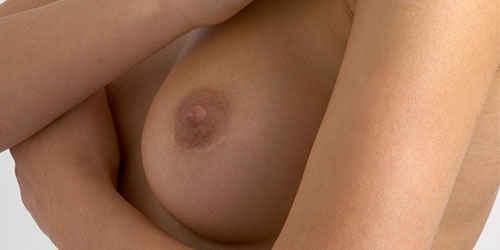Breast reconstruction
Today, breast cancer continues to be the most common type of tumor among women in our society.
Its treatment frequently entails a mastectomy or breast removal, where the woman is faced with losing a breast, in addition to facing the cancer.
It not only restores a lost organ, but also helps women recover a sense of femininity, their image and their psychological balance and contributes to lessening the stress and emotions involved in fighting cancer.

Breast reconstruction is an essential step towards normality.
Preoperative
As with any surgical procedure, patients must undergo a preoperative exam to detect any possible anomaly that could negatively affect the operation.
Anaesthesia
General anaesthesia is administered for the procedure.
Surgical procedures
Perforator flap surgery / DIEP technique
DIEP is the name commonly given to the most innovative technique for breast reconstruction.
It uses skin and fat from the abdomen, without destroying any muscle and without using any artificial material (such as implants).
The objective of plastic surgeons is to create a new breast as similar as possible to the natural breast.
This procedure does not interfere either with the treatment or subsequent follow-up for breast cancer. Every day, more and more oncologists are recommending this procedure.
The results obtained are completely satisfactory. DIEP permits the highest quality of breast reconstruction. The result is natural and definitive.
The new breast has the same feel, shape and development as a natural breast, which contributes to the patient recovering their physical and mental balance, which can be lost due to mastectomy as a treatment for breast cancer.
It is a micro-surgical procedure. Surgeons who perform it require magnifying glasses and a microscope to make the stitches in the veins that must be connected, so that the tissues for the new breast have the blood circulation required to survive.
This type of procedure takes at least six hours.
Tissue expansion method
The tissue expansion method consists of temporarily inserting an implant that can be dilated when it is slowly filled with liquid.
Over the course of time, this expansion will create excess skin in the area where the breast once was. In a second procedure, a standard breast prosthesis (silicone gel) is implanted to recreate the shape of the original breast.
A third procedure with local anaesthesia will be required after a few months to reconstruct the areola and nipple.
Wide dorsal flap
The lack of skin after having a mastectomy is replaced by moving skin from the patient’s back to the chest via a cutaneous tunnel at the underarm level.
To ensure that this skin from the back survives, we also move the immediately underlying muscle, which provides nutritive blood vessels to this skin. The medical name of this muscle is the wide dorsal muscle.
The procedure only requires one intervention, which takes two to three hours. A muscle is used that could be dispensable under normal conditions. The scar on the back is located at a height where it can be easily covered by a bra or swimsuit.
Hospitalization
We generally recommend one to two days of hospitalization.
POSTOPERATIVE CARE
Perforator flap surgery / DIEP technique
In this type of reconstruction, the postoperative period is much easier to tolerate, as recovery is quicker since it is a non-muscular flap.
Postoperative pain (similar to a Caesarean section) can be lessened by taking common analgesics.
We recommend that patients wear an abdominal compression garment and a sports bra for two to three weeks to ensure good scarring.


